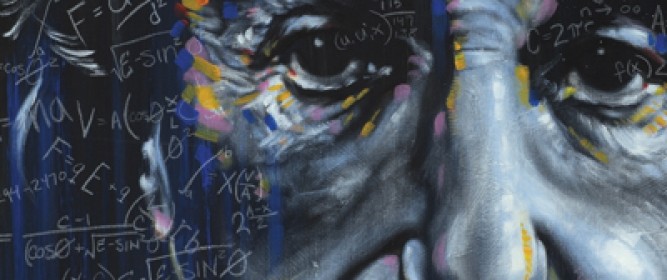No one has influenced our knowledge of the universe like Albert Einstein. He’s the most famous scientist of all time, and for good reason. Einstein published his generalization of special relativity and Newton’s laws of gravitation in 1915, called the general theory of relativity or just general relativity. It revolutionized the way physicists thought the universe worked, especially in the understanding of space, time, gravity, energy, and their relationship to each other. Many counterintuitive concepts emerged from Einstein’s theory, which are now accepted as truth.
The Equivalence Principle
One part of general relativity Einstein derived was the equivalence principle. Simply put, any object in free-fall is free from any acceleration because the inertial and gravitational masses are identical, and this means that acceleration is independent from mass. To use an example, a planetary body not accelerating (but still with velocity) is in a state of inertia, and if it encounters a gravitational field which leads to its orbiting another body, there will be no acceleration caused by this. The object’s new motion is a result of gravity curving space and an object’s tendency to continue in a straight line (inertia). Earth’s gravity equals 9.81 m/s2, therefore an object dropped will accelerate at that speed until it reaches free-fall. A logical conclusion of the equivalence principle is that a weightless spacecraft continuously accelerating at 9.81 m/s2 will produce a perceived force on its occupants equal to Earth’s gravity. The artificial gravity shown in science fiction could become science fact using this principle. A spacecraft could accelerate at 9.81 m/s2 for half of a long space flight, then at the midpoint decelerate at the same rate (producing the same perceived effect). No magical device is needed, just old fashioned physics.
The Power of Gravity
Einstein connected space and time into one cohesive whole, making time the 4th dimension after the 3 we are used to. This was to create a framework where Einstein could describe gravity’s ‘strange’ effects on the universe it resides in. Gravity tends to distort when there is a lot of it, both light and time. Gravitational time dilation is how gravity affects time, where the greater the gravity an object experiences, the slower time seems to move for it. This is most pronounced at the extreme end of gravity near black holes. As an object moves closer to a black hole’s event horizon, any other person or object observing it would see it slowing down, experiencing time more slowly. With black holes, the event horizon is the point where it appears time stops, the ‘point of no return’, but it applies for any massive object. Another consequence of general relativity is gravitational lensing. There is a curious effect where if there is a galaxy or other massive object between observers on Earth and light from another galaxy, that most distant galaxy will be distorted. The rarest and most interesting form of lensing is called an Einstein ring. This takes place when the ‘lensing’ massive object is located directly between an observer and the other galaxy, and that galaxy looks like a ring. There are hundreds of gravitational lenses, but only about a dozen partial or complete Einstein rings. These astronomical phenomena help us understand more about the early universe, like FOR J0332-3557, which has a high redshift, allowing greater observational data to be collected. Even more useful for astronomers is the elusive double Einstein ring. SDSSJ0946+1006, the only current example, was discovered in 2008. If 50 appropriate double rings were found, we could measure the universe’s dark matter content and find the equation for the state of dark energy within 10 percent precision.
The Cosmological Constant
As part of his equation describing the structure of spacetime, Einstein included what he called the ‘cosmological constant’. This constant was introduced by Einstein as a way to reconcile that gravitational forces would, over time, pull everything in the universe together. Einstein, like most physicists in the early 1900s, believed in a static universe with no expansion or contraction, and his cosmological constant was negative to achieve that. In 1929, however, Edwin Hubble discovered evidence of the universe expanding, and the cosmological constant was discarded, put at 0 in Einstein’s equations. Albert Einstein apocryphally said that his constant was the “biggest mistake of his life” after this new information was discovered. From 1929 to the 1990s this was a historical scientific curiosity, but in 1990s observations from supernovae indicated the universe was expanding, and in 1998 these observations also indicated that this expansion was accelerating. Einstein’s ‘mistake’ had managed to turn itself into something close to the truth.
It’s All Relative
The theory of relativity opened the universe to possibilities which seemed impossible and absurd before. Things at such grand scales as planets, stars, and black holes behave in ways that seem to defy logic, but have ample evidence. Einstein has opened our minds to the nature of the universe and these hundred years have shown even crazier truths.
-Alex Burns
Scientifics Direct, Inc.


